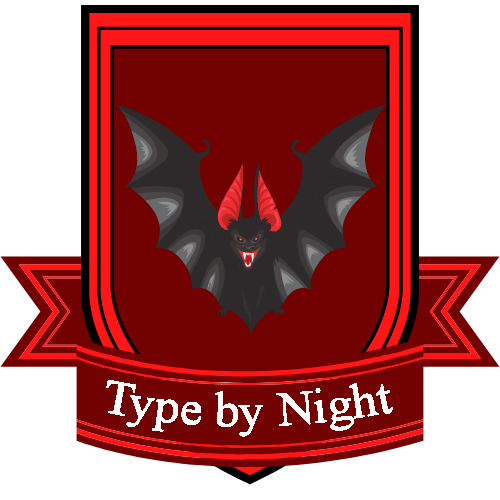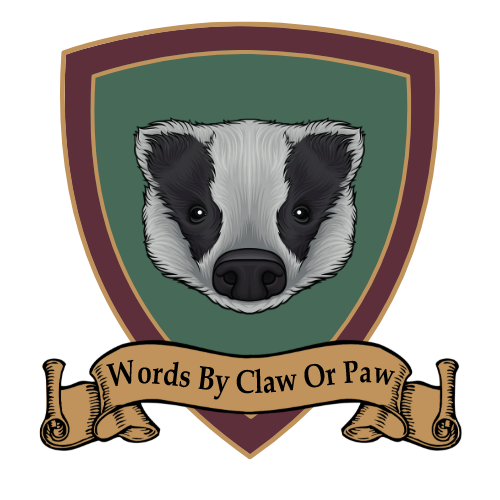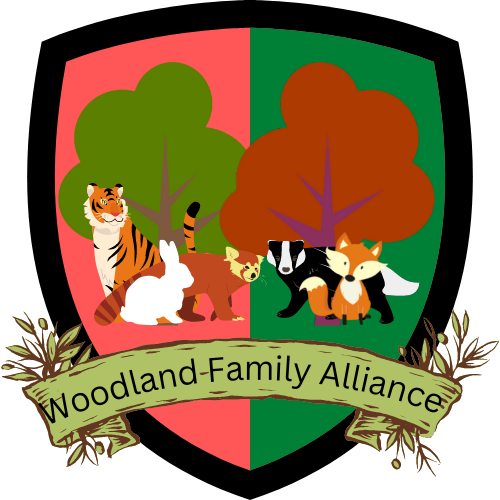Woodlander Football
Woodlander Football is a blend of Canadian and American Gridiron Football that is played in the Woodland Family Alliance Protectorates. It is an extremely popular game with a broad spectator following. Almost every college or university in the various Woodlander Protectorates has a team, and the professional league, the Woodlander Football League (WFL), is widely broadcast on network and cable television and followed by millions.
History
The Two North American Footballs
Woodlander Football evolved from rugby football, which was first recorded in Canada in the early 1860s, brought by British immigrants, possibly in 1824. The British Army garrison in Montreal played a series of games with McGill University. In 1874, the United States' Harvard University hosted Canada's McGill University to play the new game. The Canadians arrived several days early and held daily practices. After some negotiation, they decided to play a game with half and half Canadian/U.S. rules. Many of the similarities and differences between the Canadian and American games came out of this original series where each home team set the rules. For instance, Harvard, because of a lack of campus space, did not have a full-sized rugby pitch. Because of the reduced field, the Harvard team opted for 11 players per side, four fewer than the regulation 15 of rugby union. To generate more offense, Harvard also increased the number of downs from three, as set by McGill, to four. While the American team beat the Canadian (3–0 and a following tie game), both countries' flavours of football were forever changed and linked to one another. Many, if perhaps not most, of the rules differences stemmed from rules changes in American Football in the early 20th century, which were not copied by Canadian Football. The American game's modern rules were developed by Walter Camp in the late 19th and early 20th centuries, whereas the modern Canadian game was devised by John Thrift Meldrum Burnside, whose Burnside rules, invented around the same time, were developed independently from Camp's rules. The game's different iterations became extremely popular in both countries, each one developing a professional league in their own style that was eagerly watched by millions.Coming Together
When the Lapin Protectorate annexed California in early 2022, the fledgling nation was faced with a problem. Now made up of about a 50/50 population of former Canadians and former Americans, everyone wanted to maintain the game they loved. However, the new political divisions in North America, their separate rules, and especially, their different-sized fields of play, made it nearly impossible for either the Canadian Football League (CFL) or the American National Football League (NFL) to continue as they had previously. However, attempts to standardize rules were stymied by the fact that one or the other group would find it necessary to completely rebuild their fields to a new standard. That was something that very few had the available resources to do, with a zombie apocalypse only a couple of years behind them, and billions of Woodlander Talons being poured into the ongoing efforts to prepare the world for the annual Word Wars that followed the reappearance of the Undead Horde every November. The Woodlanders came up with a novel solution that combined the rules of both games, and prevented everyone from having to do more than repaint their fields to match the new ruleset. The game quickly spread from the Lapin Protectorate to the other Woodlander Protectorates as well. In the past couple of years, this has made for an interesting and complex game that is once again the most televised sport in North America.Execution
Field of Play
Woodlander Football is played on fields of various sizes. Most fields were either once used for American or Canadian Football, so they tend to range from 120 by 53+1⁄3 yards (109.7 by 48.77 m) to 150 by 65 yards (137.2 by 59.44 m). Endzones also vary in size as a result; however, all fields now contain a 5 yard "offside" area. Both of these field sizes, and any size in between, is considered a regulation field, as long as it follows the other regulations. Fields are numbered like in American Football; that is, with the 50 yard line at center, extending out in either direction down to the 10 yard lines before the endzones (which are either 10 or 20 yards deep, depending on the original field.) However, the distance between the sideline and hash marks is 24 yards (21.9 m), like in Canadian Football. Similarly, the goal posts, which are typically an H shape or a fork, are located at the beginning of the endzones, like in Canadian Football, as opposed to the end of the endzones, like in American Football.Players
Partially because of the utility in military training, the game uses 12 players on each side, like the Canadian game, as opposed to the 11 of the American game. However, the game allows for 4 downs (4 opportunities to move the ball forward at least 10 yards) rather than 3, which is taken from the American, rather than the Canadian, game. This encourages a more offensive style of play. The 12th player plays a backfield position on offense. Each team has 53 members in the WFL, although only 42 of them suit up to be ready for play each game.The Ball
While the rumour existed that the Canadian ball was bigger than the American ball, the truth was that both standards would have allowed the other to use their ball within the regulations. These days, for ease of manufacturing, the ball conforms to former NFL standards, specified as short circumference from 21 to 21+1⁄4 inches (533 to 540 mm long circumference from 28 to 28+1⁄2 inches (711 to 724 mm). However, it now features stripes on either end that completely surround the circumference of the ball, as in the Canadian game.Scrimmage
Scrimmage rules conform to the Canadian game. The ball is placed at a line of scrimmage, in which a player known as the "centre" or "center" performs a "snap" to start a football play. The snap is required to go between the centre's legs. The defensive team must stay one full yard from the line of scrimmage on their side of the line, and this is known interchangeably as "the scrimmage zone" or "the neutral zone". Because of this one-yard distance, teams tend to gamble on "third and one" or "third and inches". If a team's offense is within one yard of either goal line, the line of scrimmage is moved to the one-yard line. While large, relatively immobile offensive line players, who formed a line that could not be easily penetrated by the defense, were valued in American Football, the extra distance from the defensive team means Woodlander Football tends to make use of more nimble players on the offensive line. As in Canadian Football, all offensive backfield players, except the quarterback, may be in motion at the snap; players in motion may move in any direction as long as they are behind the line of scrimmage at the snap. In addition, the two players on the ends of the line of scrimmage (generally wide receivers) may also be in motion along the line. Many teams encourage this unlimited motion, as it can confuse the defense. It also provides receivers the advantage of a running start. Like in American Football, teams have 25 seconds after a play is whistled in to play the ball, which allows for a few more seconds of tactical thinking, compared to the Canadian 20 second limit.Field Goals and Singles
No player from the kicking team, except the kicker or any player who was behind him when he kicked the ball, may approach within five yards of the ball until it has been touched by an opponent. If they do, a "no yards" penalty is called against the kicking team. If the receiving team does not play the ball, the kicker, and any teammates behind the kicker at the time of the kick, can retrieve and advance the ball. This conforms with former Canadian play rules. This means that in Woodlander Football, it is not uncommon to see a number of players diving for a bouncing football, which differs from American Football, in that players were generally taught not to touch a bouncing ball. Any kick that goes into the endzone is a live ball, except for a successful field goal or if the goalposts are hit while the ball is in flight. If the player receiving the kick fails to return it out of the endzone, or if the ball was kicked through the endzone, then the kicking team scores a single point "rouge", and the returning team scrimmages from its 35-yard line; or, if the rouge is scored as a result of a missed field goal attempt, the receiving team may choose the last point of scrimmage. If a kicked ball in flight hits a post without scoring a field goal, there is no score, and the receiving team scrimmages from its 30-yard line. If the kick is returned out of the endzone, the receiving team next scrimmages from the place that was reached (or if they reach the opponents' goal line, they score a touchdown). Following a successful field goal, the team scored upon has the option of receiving a kickoff, kicking off from its 35-yard line, or scrimmaging at its own 35-yard line.Fair Catch
Woodlander Football has maintained the American custom of a "fair catch." If a punt returner sees that, in their judgment, they will be unable to advance the ball after catching it, they may signal for a fair catch by waving their hand in the air, and forgo the attempt to advance. If they make this signal, the opposing team must allow them to attempt to catch the ball cleanly; if they are interfered with, the team covering the kick will be penalized 15 yards.Time Rules
In a compromise between the two game versions, Woodlander Football allows 3 time-outs per team for each game. However, no more than one may be used once the three-minute warning has been given (signifying that there are three minutes of actual play left in the game.) The NFL gave a two-minute warning, three time-outs per team per game, and did not restrict their use after the two-minute warning. The CFL only allowed two time-outs per team per game. Time count rules in those last three minutes conforms more to Canadian than American game style. The penalty for a "time count" violation is loss of down on first, second, or third down, and 10 yards with the down repeated on fourth down. Also, if the referee deems a time count violation on fourth down after the three-minute warning to be deliberate, he has the right to require the offensive team to legally put the ball into play within the 25-second count, with a violation resulting in loss of possession. The period must end with a final play. Consequently, a play is often started with no time (0:00) showing on the game clock. Further, any period cannot end on a penalty, so any penalty that occurs with 0:00 left extends the period by at least one more play. This makes for a dramatically different end game than NFL fans might be familiar with, since running time down on the clock is significantly more difficult.Out of Bounds
As long as one foot of the receiver of a pass or kick is within bounds (provided the player's other foot does not come down out of bounds until the catch is made), then a catch is counted as a reception. After a heated debate, the WFL settled on the original Canadian rules concerning the fumbling of the ball out of bounds, as opposed to the rule changes the NFL made following the controversial 1978 "Holy Roller" or "Immaculate Deception" play. If the ball is fumbled out of bounds, the play ends with possession going to the team to last contact the ball in bounds (after the ball has completely left the possession of the fumbling ball carrier). A loose ball may be kicked forward (also known as "dribbled,") provided it is then recovered by a player who is onside at the time of the kick. The ball may not, however, be intentionally kicked out of bounds to gain possession. This is then treated as a scrimmage kick out of bounds and possession goes to the opposing team. Incidental contact with the foot does not count as kicking the ball out of bounds. A team may still lose possession after a fumble out of bounds, if the fumble occurred on fourth down and the ball becomes dead short of the line.Kicking and Safeties
A kick may be taken from anywhere on the field. The open-field kick may be used as a desperation last play by the offense; realizing they are unable to go the length of the field, they advance part of the way and attempt a drop kick, trying to score a field goal, or recover the ball in the endzone for a touchdown. Like a punt or missed field goal, the team receiving the kick is allowed a 5-yard buffer to recover the kick. Conversely, the defense, facing a last-second field goal attempt in a tie game or game they lead by one point, often positions its punter and place-kicker in the endzone. If the field goal is missed, they can punt the ball back into the field of play and not concede a single. Multiple such kicks may be attempted on the same play. A safety (or safety touch) awards two points to the defending team if the offensive team is brought down in their endzone. The team being awarded the two points has the option of scrimmaging from their own 35-yard line, kicking the ball off from their own 35-yard line, or a kick-off from their own 25-yard line.Scoring After a Touchdown
After a touchdown is scored, the scoring team may then attempt one play for additional points. This play is called a "convert", a "try" or "attempt," although it is more commonly referred to as either a conversion, extra point, or Point After Touchdown (PAT). The additional points may be earned through a kick or a play from scrimmage. If done via kick, the scoring team gains one point, and if done from a scrimmage, the scoring team gains two. The conversion attempts take place at the 25-yard line for placekick attempts (for a 32-yard attempt), and the 3-yard line for two-point conversion attempts. This is more in line with the Canadian rules, since the goalpost is located at the beginning of the endzone, not the end of it.The Game Season
The season consists of 17 games, like in the NFL, played over 21 weeks, from June through October (and thus, the season ends before November and the annual return of the Undead Horde.) Team standings are calculated by awarding two points for a win, one point for a tie and zero points for a loss, as it was done in the CFL. The WFL awards a playoff berth to each of its division winners (four per conference) and three wild card berths per conference. Teams may be formed either to represent a province or state (ie. the BC Lions) or a large city (ie. the Dallas Cowboys.) It all depends on what a given community can muster for the necessary resources and infrastructure, and also, to some degree, on historical precedent, since all NFL and CFL teams that remained were permitted to join the WFL at its founding.Components and tools
The necessary components to play Woodlander Football includes a regulation field, a regulation football, and safety gear for the players. This safety gear includes:
Gloves
Mouth guard
Cleats
Helmet with chin strap and clear visor
7-piece pad set
Shoulder pads
Belt
Eye black
Integrated football pants
Padded girdle
Padded performance shirt
Professional and semi-professional teams will also require a uniform, and a wrist coach for plays may also be required. Most teams, even in lower leagues, such as leagues for children, will at least require a uniform jersey.
Professional and semi-professional teams will also require a uniform, and a wrist coach for plays may also be required. Most teams, even in lower leagues, such as leagues for children, will at least require a uniform jersey.
WIP
Streamer
Missing
Status: Location Unknown
Deceased
Status: Deceased Character
Retired
Status: Retired Character or Article

Okanagan City Jackrabbits by Moonflower with NightCafe
Primary Related Location
Important Locations
Related Organizations
The Super Cup

The Jackrabbit Cup by Moonflower with NightCafe
Of course I put a lot of money into football. Can you think of a better way to teach small-unit tactics to civilians? 12 is the number of players each team has on the field, and 12 is the size of a squad. Besides, all rugby-derivative games are small-unit analogues, and football is better than most due to its complexity. And it keeps the players in fighting shape, which is why it's so popular among the military.


















Love the importance of a game as giving comfort. I'm also no expert on football, but this looked good.
Thanks Deleyna! Yeah, I knew it was a bit of a unique take and therefore a risk, but I thought it made good cultural sense in this universe :)